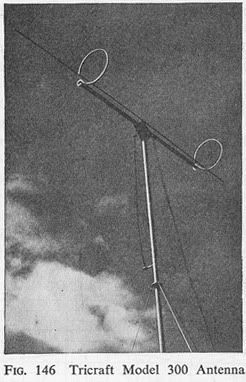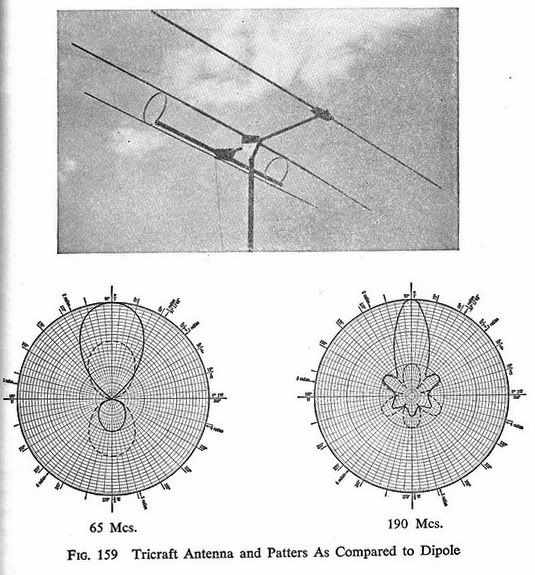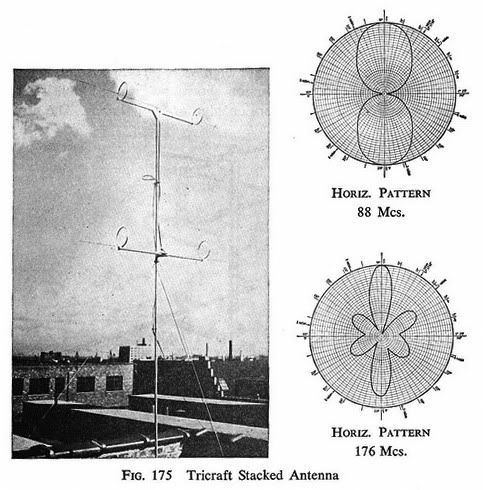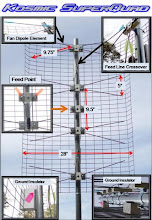An unusual design is incorporated in the folded dipoles of Tricraft models 300 and 500 (above and below). As shown above, the model 300 antenna consists of two dipoles, a thin one cut for 70 megacycles and a thick one cut for 128 megacycles. The thick member is connected to the thin dipole by inductive rings, the latter connecting to the midpoints of the long 70 megacycle dipole. These rings act to end feed the shorter dipole, besides which they also act as supports for the thin section.
When this antenna is used to bring in the lower channels, it behaves as a broad band folded dipole which is resonant at about 65 megacycles, the inductive rings acting as couplers of the two antennas and making them act as a folded dipole unit. At the higher channels, the long thin dipole becomes a wavelength and a half antenna, but the short antenna, being end fed by the inductive rings, establishes and in-phase relationship between the two dipole currents. This raises the radiation resistance of this antenna at the higher channels to a value much greater than it would be for a regular low band dipole working at the higher channels. Thus, a substantial match between antenna and transmission line is maintained for both high and low band reception when using 300 ohm transmission line.
The Tricraft model 500 antenna is similar in construction, except that the long thin dipole section is mounted in a vertical position. This model is designed for mounting outside a window or porch in those instances where roof installations are not feasible.
The Tricraft model 1000 antenna (see above) uses a pair of parasitic reflectors with both a near- and far-spaced reflector. This antenna has a rated 10 dB gain on the VHF high band and 5 1/2 dB on the VHF low band channels, with unidirectional pattern at the same angle on both the low and high band. Although a number of minor lobes are present on the high band a single lobe is made to dominate in the desired direction.
A typical broadside antenna is the Tricraft model 400 which consists of two of their broad band dipoles fed in phase. Antennas are spaced a half wavelength on the VHF low band and fed with 300 ohm line at midpoint. This antenna (see above) has a gain of approximately 3 to 5 dB, depending on frequency.













.jpg)








No comments:
Post a Comment